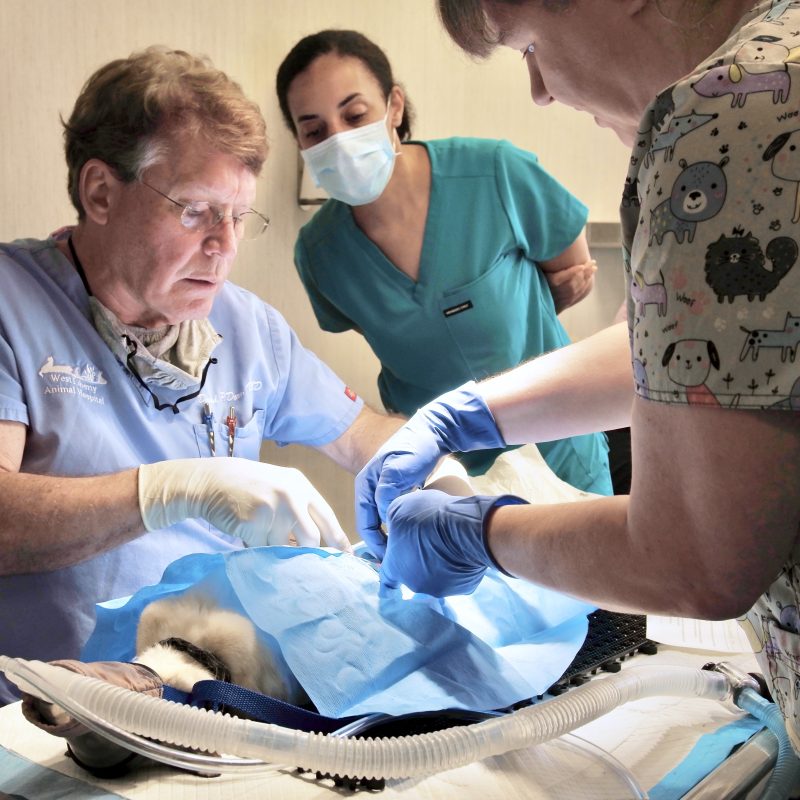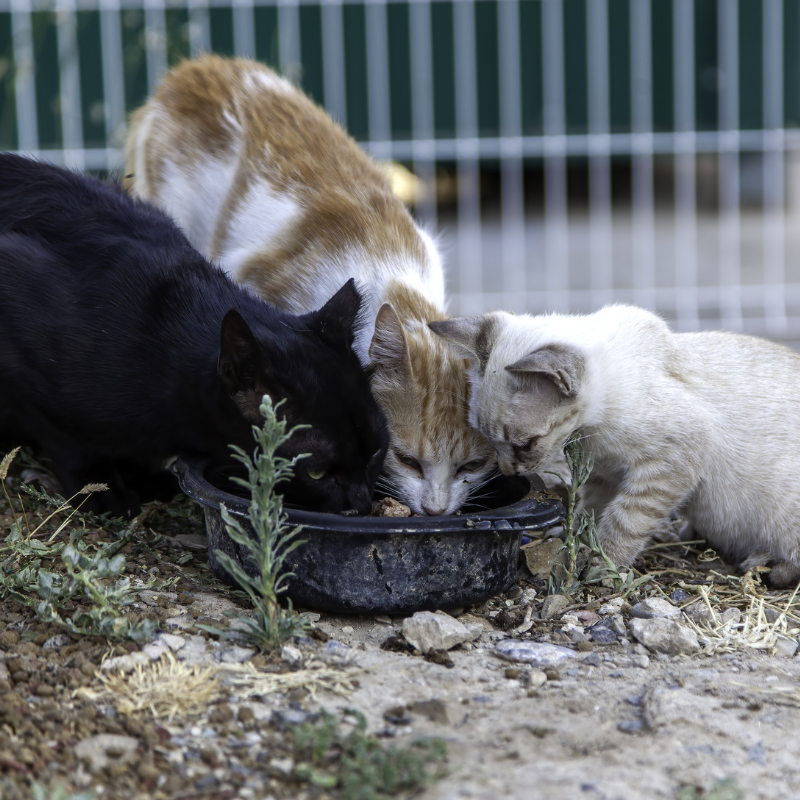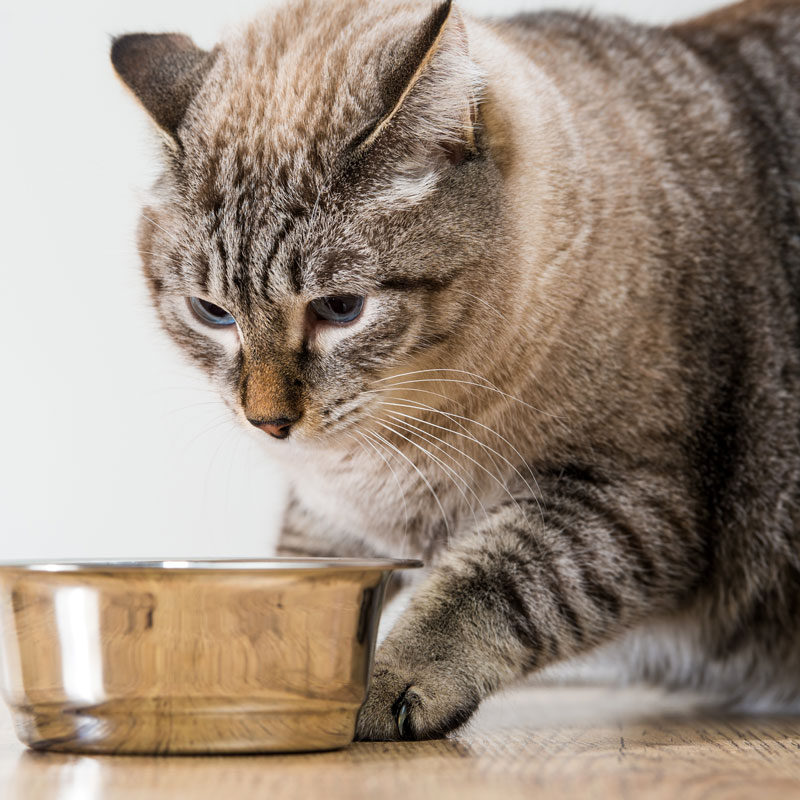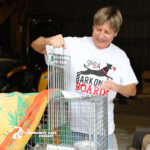
Special Episode! From the Backyard to the Front Page: Building a TNR Movement, Part 2, with Bryan Kortis, National Programs Director, Neighborhood Cats
May 28, 2024
Nuggets of Hope, with Kim Lengling, Author and Host of the Let Fear Bounce Podcast
June 4, 2024
This article was contributed by Colette Resnikoff, Virtual Volunteer
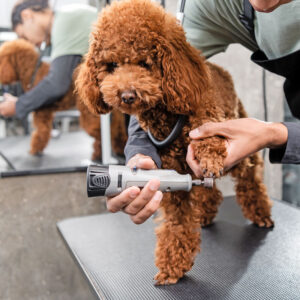 I found myself injured in 2019 in a car accident that broke my dominant wrist in 3 places. I was diagnosed with early arthritis, and with repetitive motion injuries to wrists, back, and shoulders from dog grooming, I was in chronic pain. While I was unable to groom dogs as a career any longer, I still wanted to remain involved in the animal world. I offered to groom on a volunteer basis at our local shelter and found the setup was impossible for me to work in. I tried to find a couple of other locations, but no shelter was accommodating to ergonomics or bodily considerations for bathing or grooming.
I found myself injured in 2019 in a car accident that broke my dominant wrist in 3 places. I was diagnosed with early arthritis, and with repetitive motion injuries to wrists, back, and shoulders from dog grooming, I was in chronic pain. While I was unable to groom dogs as a career any longer, I still wanted to remain involved in the animal world. I offered to groom on a volunteer basis at our local shelter and found the setup was impossible for me to work in. I tried to find a couple of other locations, but no shelter was accommodating to ergonomics or bodily considerations for bathing or grooming.
I shifted to advocating for those animals, and to write legislators about quality of life for our sheltered animals, while also advocating for the folks who care for them. I’d heard firsthand stories of how other volunteers were treated poorly, and that was concerning to me. At that time we had no foster program in place. It’s taken years to get that concept to the forefront and acknowledge that fostering actually costs less than housing the animals in a shelter. They receive the bonus of experiencing life inside a home and receiving regular attention, quality of life, exercise, bathing, and vetting at the shelter’s expense. We’re finding that expenses and inflation in Central Texas have left many potential adopters financially strapped in a post-Covid world. Also, the rescue community is small and it’s been tough to grow that group. I believe that compassion fatigue sets in when too much burden rests upon the shoulders of a small group, and causes a tremendous amount of stress and discord. I was approached by another advocate in our community who expressed that she felt like a singular voice of advocacy and needed support. I agreed and began to explore the learning resources she directed me toward.
That list of resources has nearly quadrupled since then and I’ve been able to build some new relationships within those organizations while reaching out and seeking new sources to supplement my curiosity. I learned about those who specialize in TNR, fighting puppy mills, creating legislation, educating law enforcement, local ordinances, spay/ neuter and access to care, the statistics that support the effectiveness of microchips, and educates about cruelty laws for the general public, and who the educational groups are that raise the bar in animal welfare standards nationally. I broadened my scope to include wildlife and livestock audiences in addition to companion animals. After all, this is all about animals, ALL animals, and how we view them as coexisting sentient beings in our environment. It’s in respect to public health and safety, environmentalism, stewardship of dollars, our environment as well as quality of human and animal life. A bigger picture became clear to me when I learned of The Link, which is FBI and DOJ information gleaned from studies that evidence 77% of animal cruelty is co-occurring with interpersonal violence. The primary targets of that violence are domestic partners, children, and the elderly population. We often look to the skies for inspiration in how to present these passionate causes in a light other than the bleeding hearts of society. As we piece together the puzzle of the human-animal bond, I found that not only are the bonds between companion animals and their people life-changing and even lifesaving at times, but they also improve our mental and physiological health. They decrease stress levels and bring comfort and support to many who have no support systems in place or find it difficult to relate to other humans.
 I reached out to legislators consistently to explain that zoonotic and contagious diseases fall under the realm of public health and safety. Starving, unsocialized strays pose a danger and we’ve begun to see increased numbers of attacks in public within large cities due to the lack of budget, staffing, public education, access to care, and attention to these matters. I found a study conducted by a wildlife scientist who did a TNR experiment in Linosa, Italy. Often it’s wildlife enthusiasts who discourage TNR; this was compelling data that supported the effectiveness of Trap Neuter Return for the sole purpose of protecting wildlife. If we can partner with public services such as animal protection departments, health departments, and neighborhood code enforcement, we can share the burden of the work of trapping, the cost of spay/ neuter, and the transport logistics in order to have the large concentrated effect that the Community Cats Podcast elaborated on. That initial aggressive push to make a large dent in the population with an effort to recruit colony keepers can significantly decrease shelter intake numbers. When we add return-to-owner strategies of microchipping and catio education, along with greater access to care for low-income communities and marginalized populations of pet owners, we can make an even greater impact.
I reached out to legislators consistently to explain that zoonotic and contagious diseases fall under the realm of public health and safety. Starving, unsocialized strays pose a danger and we’ve begun to see increased numbers of attacks in public within large cities due to the lack of budget, staffing, public education, access to care, and attention to these matters. I found a study conducted by a wildlife scientist who did a TNR experiment in Linosa, Italy. Often it’s wildlife enthusiasts who discourage TNR; this was compelling data that supported the effectiveness of Trap Neuter Return for the sole purpose of protecting wildlife. If we can partner with public services such as animal protection departments, health departments, and neighborhood code enforcement, we can share the burden of the work of trapping, the cost of spay/ neuter, and the transport logistics in order to have the large concentrated effect that the Community Cats Podcast elaborated on. That initial aggressive push to make a large dent in the population with an effort to recruit colony keepers can significantly decrease shelter intake numbers. When we add return-to-owner strategies of microchipping and catio education, along with greater access to care for low-income communities and marginalized populations of pet owners, we can make an even greater impact.
As the spay/neuter resources become available, we reduce the effects of backyard breeding of dogs in addition to cats. I began to discuss the health benefits of spay/neuter. My physical challenges keep me from boots-on-the-ground activities like trapping, rescuing, fostering, or even joining the microchip scan volunteer team. I devoted two years to crossposting lost & found online posts including the pet’s picture, the nearest cross streets, and the city; we’re in a sprawling semi-urban county with many rural areas between cities and in county jurisdictions and the online exposure was reuniting anywhere from 3-5 pets per day in one group alone. We had 5 or 6 groups in total. I realized that shelter intake prevention was tremendously effective in assisting the shelter and also in leading to happy reunions for pets and their families. We are desperately understaffed in animal protection officers to manage the exploding population as the fastest-growing county in the country outside of Austin, TX, and all hands on deck are needed. After a year on the official team and finding myself utterly obsessed with reunions (it’s addictive for sure), I stepped back from those efforts for the sake of my own mental health.
I also learned that that whole process could be automated from the model El Paso has implemented; the onus now lies on county and state leadership to implement and prevent that burnout for volunteers, improve cybersafety, reduce labor hours, improve efficiency and efficacy, protect citizens from scams, fraud, and the potential stranger dangers of meeting up with ill-intentioned characters out of desperation to find their pets and match our efforts in dollars and initiative for genuine improvement. I passed these case studies along to “the powers that be” about 5 months ago. Most of the time my letters do not generate a response from the recipients, but things do change. We’ve begun to talk about domestic violence, and how many pets are affected by it, either keeping the victim from leaving due to fear of retaliation toward their beloved pet, or animals who’ve also suffered abuse as a means to inflict emotional suffering on the owner. We discuss how housing situations and student populations impact matters. We discuss how closed shelter intake of neighboring counties impacts us in regards to abandonment, and how we can learn useful statutes of non-livestock animal cruelty laws.
 I looked to other communities, cities, and shelters where dramatic change and successes were apparent and created a small Facebook page called Texas Animal Progress Newsletter, or TAP Newsletter for short, where I could share these discoveries for free with other interested advocates wanting change and improvement in their communities. It outlined the ideas behind a no-kill equation, a no-kill community, how there cannot be a successful no-kill shelter without all the community resources needed to address the social issues, and the inspiration from other places that are embracing creativity, enrichment, fostering, access to care, field strategies to return to owners, shelter diversion initiatives, community engagement, marketing and social media, robust foster, adoption, and volunteer programs, and investing in the needed tools and software to manage and organize those programs with consideration to ROI, or Return on Investment. The work being done is incredible and revolutionary.
I looked to other communities, cities, and shelters where dramatic change and successes were apparent and created a small Facebook page called Texas Animal Progress Newsletter, or TAP Newsletter for short, where I could share these discoveries for free with other interested advocates wanting change and improvement in their communities. It outlined the ideas behind a no-kill equation, a no-kill community, how there cannot be a successful no-kill shelter without all the community resources needed to address the social issues, and the inspiration from other places that are embracing creativity, enrichment, fostering, access to care, field strategies to return to owners, shelter diversion initiatives, community engagement, marketing and social media, robust foster, adoption, and volunteer programs, and investing in the needed tools and software to manage and organize those programs with consideration to ROI, or Return on Investment. The work being done is incredible and revolutionary.
We need to acknowledge compassion fatigue, mental health, sufficient staffing, mindful environments that encourage open-door communication, and a work environment of respect and receptiveness, free of biases and judgment. We need to have hard conversations where we can feel safe exploring uncomfortable topics and conversations while avoiding subjective language like “negativity”. We grow and learn the most when we’re uncomfortable and it doesn’t give us an open license to be hurtful, abusive, or judgmental toward the public or other members of the rescue and volunteer community. I pursued continuing education outside of dog grooming and becoming a certified canine esthetician to include every tidbit of knowledge I could find that pertained to animal sheltering, sociology, non-livestock animal cruelty laws, mental health, disabilities, health and quality of life, pet stewardship, compassion fatigue and have widely promoted all the local events in regards to affordable preventative vetting and the new virtual shelter resources we now have from our upcoming adoption center. I’ve made sure that some of that marketing is bilingual in consideration of our local demographics. We’ve had to consider the veterinary shortage of the industry, even though my research led me to the fact that we have 35 veterinarians in our county, but not one of them provides 24/7 emergent care. We still need 24/7 first responder animal protection services, because they protect people as well and emergencies don’t choose convenient hours. There’s still work to be done. I hope this wandering journey can offer a path to anyone else reading and wanting to know how they can make a difference in a Virtual Volunteering role.

